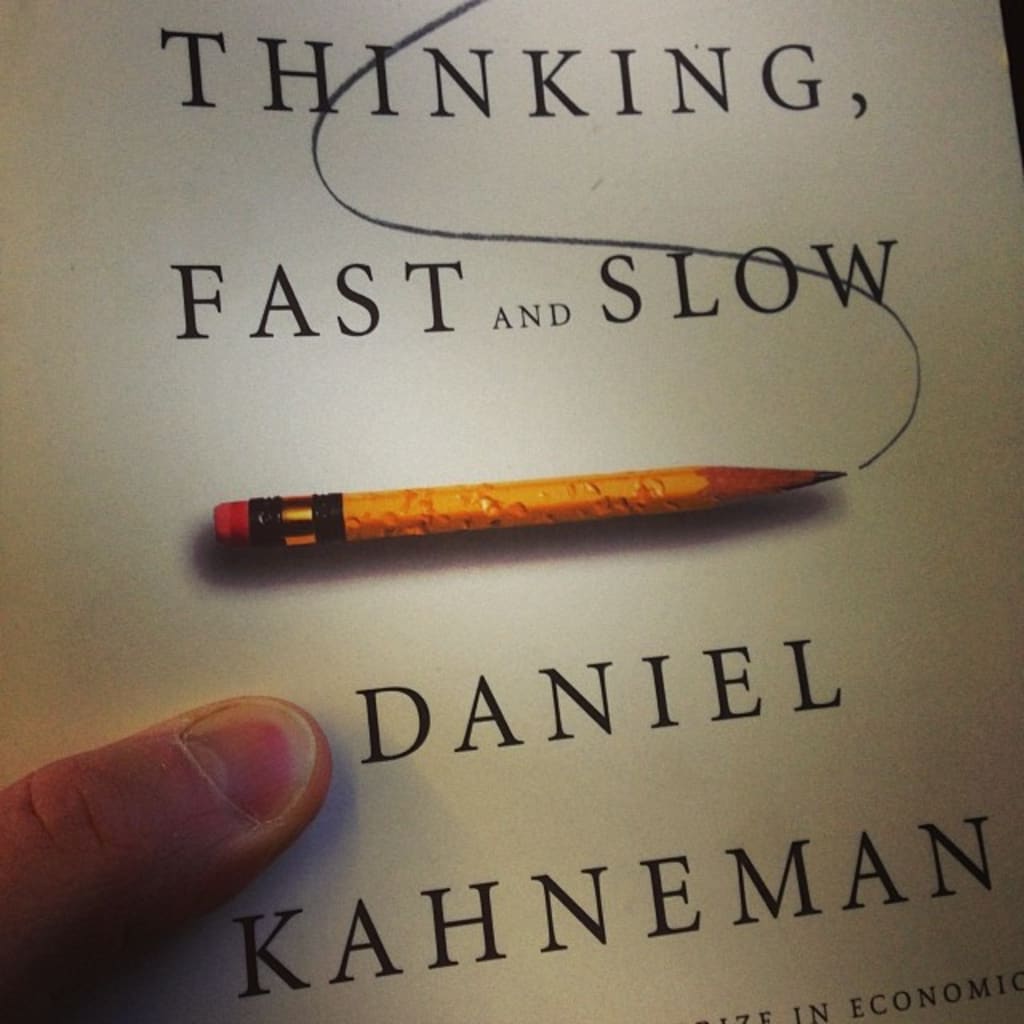Thinking, Fast and Slow- book review
Unlocking the Secrets of the Mind: A Fascinating Journey

Thinking, Fast and Slow is a fascinating book by Daniel Kahneman that explores the two systems of thinking that govern our thought processes: System 1, which is fast and intuitive, and System 2, which is slow and deliberate. The book provides an in-depth analysis of these systems and how they influence our decision-making, judgment, and behavior. Kahneman is a Nobel laureate in economics and a pioneer in the field of behavioral economics, and his insights have had a profound impact on the way we think about thinking.
The book is divided into five sections, each of which explores a different aspect of thinking. The first section, "Two Systems," provides an overview of the two systems of thinking and how they interact with each other. System 1 is the fast, intuitive system that operates automatically and unconsciously, while System 2 is the slow, deliberate system that requires effort and attention. Kahneman argues that System 1 is essential for our survival, but it is also prone to errors and biases. System 2, on the other hand, is necessary for complex tasks, but it is also prone to laziness and cognitive overload.
The second section, "Heuristics and Biases," explores the various cognitive biases that affect our thinking. Kahneman explains that these biases are the result of the shortcuts that System 1 takes in order to make quick judgments and decisions. He provides numerous examples of these biases, such as the availability heuristic, the anchoring effect, and the confirmation bias. The section is a comprehensive guide to the many ways in which our thinking can go wrong.
The third section, "Overconfidence," focuses on the ways in which we tend to overestimate our abilities and our knowledge. Kahneman argues that overconfidence is a major source of error in decision-making and that it is often the result of the illusions of skill and control. He also explains how we can reduce overconfidence by using feedback and calibration.
The fourth section, "Choices," explores the different ways in which we make choices and the factors that influence our decisions. Kahneman introduces the concept of prospect theory, which describes how people evaluate risks and rewards. He also discusses the role of emotions, social norms, and framing in shaping our choices. The section provides a comprehensive analysis of the complex factors that affect our decision-making.
The fifth and final section, "Two Selves," explores the concept of the divided self. Kahneman argues that we have two selves: the experiencing self and the remembering self. The experiencing self is the one that lives in the present moment and experiences pleasure or pain, while the remembering self is the one that creates memories and makes decisions based on those memories. He explains how the two selves can come into conflict and how we can use this knowledge to make better decisions.
Overall, Thinking, Fast and Slow is a fascinating and insightful book that provides a comprehensive analysis of the ways in which we think. Kahneman's writing is clear and engaging, and he provides numerous examples and anecdotes to illustrate his points. The book is also well-organized, with each section building on the previous one. The book is not an easy read, however. It is dense and requires concentration and effort to fully appreciate the concepts and ideas presented.
One of the strengths of the book is that it provides practical insights and advice on how to improve our thinking. Kahneman offers a range of strategies for reducing cognitive biases, improving decision-making, and increasing self-awareness. He emphasizes the importance of thinking critically and questioning our assumptions. The book is a valuable resource for anyone who wants to improve their thinking skills, whether in their personal or professional life.
One of the limitations of the book is that it is largely focused on individual thinking and decision-making. While Kahneman briefly touches on the role of social and cultural factors, the book





Comments
There are no comments for this story
Be the first to respond and start the conversation.